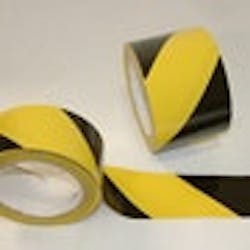Many plants now boast markedly better performance and reliability than they were able to achieve in the past. A major reason for such gains has been increasing reliance on sophisticated equipment and software that have become available thanks to the continuing evolution of technology.
[pullquote]Of course, many factors contribute to improvements in equipment efficiency and durability — including advances in materials, the ability to make more precise parts, and greater condition-monitoring capabilities. Such developments underpin the technical and economic viability of producing more complex but better-performing devices.
Meanwhile, developments in software, spurred by the availability and affordability of more powerful computers, are transforming how we design and operate units. For instance, check out what simulation now offers in "Consider Dynamic Simulation for Steam System Design," and "Consider Discrete Event Simulation." Likewise, today's process control software promises a host of benefits besides tighter control. For example, it provides a way to address the alarm overload that afflicts many plants ("Adroitly Manage Alarms.") Another but often-overlooked opportunity is to use the control system to improve overall operational effectiveness ("Consider State-Based Control").
Further gains in plant performance are inevitable, as sites increasingly adopt digital fieldbuses (see "Take Advantage of Fieldbus," and wireless technology ("Whither Wireless").
There's no question that emerging developments are attracting significant interest at sites because of their benefits. However, we mustn't let the increasing focus on sophisticated equipment and systems cause us to ignore less exciting plant assets like tanks and piping. Two articles in this issue make convincing cases for paying adequate attention to such mundane items.
"Treat Tanks with Care," points out some common problems, e.g., overfilling, and over-pressure or under-pressure, that have led to tanks being reduced to scrap or even more severe consequences. The article stresses that it's easy to avoid such dangers and offers a number of recommendations about tank layout and design.
If that article isn't persuasive enough, read "Don't Underestimate Overfilling's Risks," which recounts that loss of level control in tanks contributed to three major industrial catastrophes. It outlines seven simple steps to avoid dangers.
Another hazard that can occur with tanks and common plant hardware is spark generation due to the buildup of static electricity. "Understand the Shocking Truth," www.ChemicalProcessing.com/articles/2010/192.html, warns that the absence of a good path to ground may result in the buildup of electrostatic charges on mundane items like metal flanges, fittings, valves and vessels that can lead to fires and explosions. Here, too, some simple steps can avoid risks.
Of course, tank failures and static-electricity-caused fires have afflicted plants since the earliest days of the industry. Safety guru Trevor Kletz notes in "Bhopal Leaves a Lasting Legacy," www.ChemicalProcessing.com/articles/2009/238.html, that the same mistakes unfortunately recur regularly: "Chemical makers investigate and report on accidents and make changes — but then file away and soon forget the reports. Moreover, they don't always share them with other firms."
Some companies are conscientiously trying to improve their institutional memory ("Companies Keep Know-how in Place," www.ChemicalProcessing.com/articles/2009/114.html). Sophisticated technology undoubtedly can play an important role in capturing knowledge about plant equipment and operations. It's particularly valuable for documenting subtle issues uncovered over the years by veteran staff now retiring.
There's no excuse, however, for not appreciating right now — and acting against — the common risks posed by tanks and other run-of-the-mill equipment. They've been well documented for ages. Articles such as the two in this issue clearly point up the hazards as well as how to address them.
Mark Rosenzweig is Chemical Processing's Editor in Chief. You can e-mail him at [email protected].
About the Author
Mark Rosenzweig
Former Editor-in-Chief
Mark Rosenzweig is Chemical Processing's former editor-in-chief. Previously, he was editor-in-chief of the American Institute of Chemical Engineers' magazine Chemical Engineering Progress. Before that, he held a variety of roles, including European editor and managing editor, at Chemical Engineering. He has received a prestigious Neal award from American Business Media. He earned a degree in chemical engineering from The Cooper Union. His collection of typewriters now exceeds 100, and he has driven a 1964 Studebaker Gran Turismo Hawk for more than 40 years.
